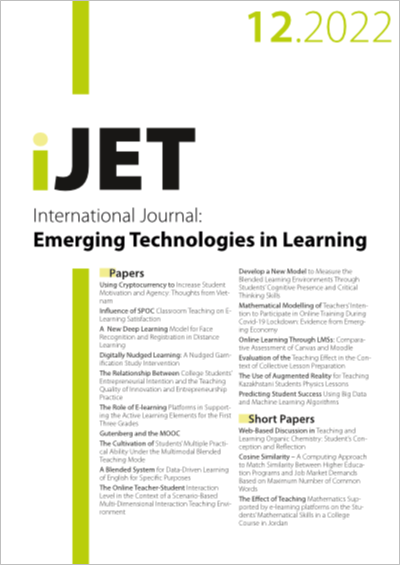The Use of Augmented Reality for Teaching Kazakhstani Students Physics Lessons
DOI:
https://doi.org/10.3991/ijet.v17i12.29501Keywords:
augmented reality, physics lessons, computer science, educationAbstract
Augmented reality (AR) practices and technologies have the potential to redefine aspects of education, including laboratory work. AR tools provide an easy and cost-effective solution for helping students overcome the constraints imposed by online education. The article demonstrates the use of an AR application in Physics lessons at the Lyceum School No. 85 in Nur-Sultan city, Kazakhstan. The AR application includes an interactive 3D model of circuits and circuit components that can be viewed, manipulated, and explored. The AR application helps students learn about circuits through direct interaction with the circuit components without having to rely on expensive, time-consuming and dangerous experiments and equipment. The authors rely on the assumption that the use of interactive 3D models improves student learning outcomes and evaluate student attitudes towards the adoption of AR technology in classrooms. Students from the 8th grade are divided into four experimental groups based on their academic performance. The results show the effectiveness of the AR application in improving retention and understanding of physics concepts over traditional instruction methods. The experiment is not intended as a prescription for augmentation but shows that AR tools can be an efficient alternative to the risk-prone, costly laboratory environment and that such tools can be employed to enhance learning.
Downloads
Published
How to Cite
Issue
Section
License
Copyright (c) 2022 PhD Mukhtarkyzy, Assoc.prof Abildinova , PhD Sayakov

This work is licensed under a Creative Commons Attribution 4.0 International License.


